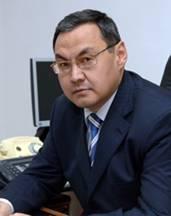 The agro-industrial complex is one of the most promising sectors of Kazakhstan’s economy. Few states have comparable potential for agricultural development, and it is already clear that with the growth of the world population, only countries capable of exporting food will be able to be major players on the world market.
The agro-industrial complex is one of the most promising sectors of Kazakhstan’s economy. Few states have comparable potential for agricultural development, and it is already clear that with the growth of the world population, only countries capable of exporting food will be able to be major players on the world market.
Kazakhstan’s government is paying attention to agriculture, including through funding increases and the development of new programmes and instruments of state support. Statistics show that gross output is growing, as are investments in the industry, and new agricultural facilities are being commissioned. Imports of agro-products are also growing and food prices are rising – yet the structure of export has not changed. Why?
The fact is that the lion’s share of domestic agricultural products are not competitive on the world market, mainly because of the outdated technology used in their production. The solution, therefore, is not to increase subsidies to agriculture, but to restore the scientific aspects of the industry. We should bear in mind that after Kazakhstan’s accession to the World Trade Organisation (WTO), the government will have to reduce state support to agribusiness that falls into the WTO’s “yellow box” or limited category, while public investments in science fall into the “green box” category and are not subject to such restrictions.
That’s why today we need a qualitative leap in technological modernisation: effective innovations for agriculture, best agricultural technologies, high-yielding varieties and hybrids, high-yielding animals and high-performance machines and equipment.
For example, in Australia, where environmental conditions are harsher than in Kazakhstan, the wheat yield is nearly double ours. The secret is that Australia has formed one of the world’s best research systems in agriculture.
Australian scientists are continuously improving biotechnologies, allowing them to create exceptional crop characteristics. Scientific achievements in the field of genomics have considerably reduced the cost of crop breeding.
Another problem is livestock improvement. Countries like the U.S., France and Canada are improving their livestock not by importing breeding cattle from abroad, but by systematically improving their breeds through gene selection.
In France alone, gene selection has led to an increase in annual milk yields from four tonnes to six tonnes per cow over the past twenty years.
The Netherlands is another example of successful agricultural innovation. The country one-fifth the size of our Almaty region exports agricultural products at almost $50 billion a year and is the world’s second-largest exporter in this indicator after the United States.
Economic and technological policy in the agrarian sector of the Netherlands is formed mainly by the Wageningen University and Research Centre. All key decisions are prepared by scientists based on expertise and specific problems of practice. The Wageningen University is a model of a successful national agro-innovation cluster. It is called the Food Valley of the Netherlands, echoing the famous Silicon Valley in the United States. Combining in one complex an educational centre, research institute and technology park, the university generates the Dutch agro-miracle.
As evidenced by numerous studies, investment in agricultural science is many times more effective than direct investment in the industry. Even in 1992, Canadian scientists found that every dollar invested in agricultural research brought a performance gain of $40.
A common feature of the strongest agricultural powers in the world, then, is the dominant position of agricultural science, which supports not only agricultural production, but also public policy in general. That is why, in his recent state-of-the-nation address, the head of state stressed the need to develop the national agricultural research system and agribusiness through agro-innovation clusters.
In agricultural research, we have fallen far behind leading world powers and lost many valuable professionals and entire research areas. We need to create in Kazakhstan a new, modern, scientific school. But we cannot solve this problem by ourselves. For this, it is necessary to develop partnerships with leading research centres and attract famous foreign scientists to work with talented youth, as the Nazarbayev University does. This will allow us to quickly create our own competence for solving urgent problems in the industry.
Global experience shows that today, the optimal form of organisation of agricultural science and higher education is the research university. Only research universities can synchronise research processes with training and introduce results in practice. Research universities provide an opportunity to prepare specialists able to apply the latest innovations in practice.
We believe that the research agricultural university should become the nucleus of a new agro-innovation cluster in Kazakhstan.
On the President’s instructions given at the meeting of the Foreign Investors’ Council in May 2013, we have already begun the transformation of the Kazakh Saken Seifullin Agro Technical University and we believe that only the strategic development of the intellectual potential there will allow Kazakhstan to create its own fertile Food Valley.
The author is rector of the Kazakh Saken Seifullin Agro Technical University and a former Minister of Agriculture of Kazakhstan.

